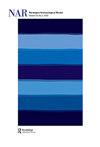论殖民主义与欧洲中石器时代
IF 1.1
3区 历史学
0 ARCHAEOLOGY
引用次数: 0
摘要
殖民遗产对欧洲中石器时代学术工作的影响在本文中由艾略特和沃伦代表。他们在无数非殖民化思想中对这个问题的看法得到了很好的研究。他们仔细研究了欧洲中石器时代殖民征服的基本原因、方式和对象(格雷姆·沃伦在一次讨论中提出),从而将殖民征服的历史纠缠在一起。这一思路有助于我们理解为什么非殖民化是必要的,它是如何影响当前关于中石器时代的学术研究的,以及它影响了谁。埃利奥特和沃伦潜入了欧洲中石器时代考古学以前未知的深水,并权衡了全球中石器时代考古学中殖民思维过程的后果。作者目前的论文是在更广泛的狩猎采集者研究社区内长期进行辩论的结果。这包括与土著社区合作的学者和从事中石器时代考古工作的考古学家。正如论文中所解释的那样,关于“中石器时代非殖民化”的具体对话始于作者于2021年5月组织的关于该主题的研讨会。在理解“中石器文化”一词在世界范围内的使用之前,解释和分离欧洲情景的必要性在某种程度上是整个项目的核心。这个词的根深蒂固的用法必须受到质疑,埃利奥特和沃伦,在这篇文章中,正确地针对这样一个敏感的问题与事实信息。“中石器时代”一词经常被广泛使用,并与工具型微石器联系在一起,这些微石器主要产生于晚更新世至晚全新世。这种工具类型的发生和生产在全球范围内是时空变化的。然而,这一阶段的命名法表示。中石器时代在殖民统治下的国家使用和应用。埃利奥特和沃伦指出了这个词的起源,它的定义,以及它在北欧的恰当用法,他们还指出,到目前为止,这个词并不包括整个欧洲大陆。从这项研究的基础开始,作者首先解释了非殖民化,以及它是否影响了学术研究和他们作为教育工作者的日常生活。通过宏观视角看待非殖民化,他们试图通过遵循皮姆布洛特(2020)和布鲁查(2014)在大学水平的教学中理解它。他们指出,这些大学在评估土著人口的文化和传统时采用了以欧洲为中心的方法。这些曲目必须拆开来听本文章由计算机程序翻译,如有差异,请以英文原文为准。
An Exposition on Colonialism and the European Mesolithic by Benjamin Elliott and Graeme Warren
The influence of colonial legacy on the scholarly work of the European Mesolithic has been represented in this paper by Elliot and Warren. Their take on this subject within the myriad of Decolonisation thought is wellresearched. They entangle the histories of colonial subjugation in the European Mesolithic by carefully examining the fundamentalswhy, how, and who (suggested by Graeme Warren in a discussion). This train of thought helps us understand why decolonisation is necessary, how it has and does affect the current scholarship on Mesolithic, and whom it affects. Elliot and Warren dive into the previously unknown deep waters of Mesolithic archaeology in the European scenario and weigh the consequences of the colonial thought process in Mesolithic archaeology globally. The present paper by the authors is an outcome of the long ongoing debates within the broader community of hunter-gatherer studies. This includes the scholars working with the indigenous communities and the archaeologists working in Mesolithic archaeology. As explained in the paper, specific dialogue on ‘Decolonising the Mesolithic’ began with the workshop on this topic that the authors organised in May of 2021. Before understanding the use of the term ‘Mesolithic culture’ worldwide, the necessity to explain and unhinge the European scenario is somehow the spine of this whole project. The deep-rooted use of this term has to be questioned, and Elliot and Warren, in this paper, rightly target such a sensitive issue with factual information. The term Mesolithic is frequently used loosely and globally and is attached to the tool typemicroliths, which were produced largely from Late Pleistocene to the Late Holocene period. The occurrence and production of this tool type are spatiotemporally varied globally. However, the nomenclature denoted to this phasei.e. Mesolithicis used and applied in the countries under colonial rule. Elliot and Warren pointed out the origin of this term, its definition, and its apt use in Northern Europe, and they also state that this term is by far not inclusive for the whole of the European continent. Beginning with the basis of this research, the authors start by explaining decolonisation and whether it impacts our daily lives in academic research and for them as educators. Looking at decolonisation through a macro lens, they try to understand it in university-level teaching by following Pimblott’s (2020) and Bruchac’s (2014). They point out the universities’ Eurocentric approach towards assessing indigenous populations’ cultures and traditions. Such repertoire must be dismantled to listen to
求助全文
通过发布文献求助,成功后即可免费获取论文全文。
去求助
来源期刊

Norwegian Archaeological Review
ARCHAEOLOGY-
CiteScore
2.10
自引率
0.00%
发文量
13
期刊介绍:
Norwegian Archaeological Review published since 1968, aims to be an interface between archaeological research in the Nordic countries and global archaeological trends, a meeting ground for current discussion of theoretical and methodical problems on an international scientific level. The main focus is on the European area, but discussions based upon results from other parts of the world are also welcomed. The comments of specialists, along with the author"s reply, are given as an addendum to selected articles. The Journal is also receptive to uninvited opinions and comments on a wider scope of archaeological themes, e.g. articles in Norwegian Archaeological Review or other journals, monographies, conferences.
 求助内容:
求助内容: 应助结果提醒方式:
应助结果提醒方式:


